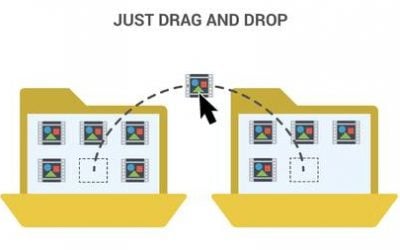Maximo Scheduler applications have been around for a while, but some great design enhancements and functionalities released by IBM in the recent versions; and the fact that it provides maintenance planning and scheduling capabilities within Maximo eliminates the need to train workforces to use a different system and furthermore, eliminates an additional integration point with a different external system. The organizations that use Graphical Scheduling applications to their potential have started realizing the value of tightly coupled Asset Management, Work Management and Planning & Scheduling applications functioning together to provide great process efficiency and optimal resource usage…but what about Crew Management?
With Maximo Scheduler comes a great functionality to graphically manage Crews and the capability to move labour resources in and out of those Crews. Crews are used extensively by the organizations that focus on building specialized teams with the necessary crafts and tools and dispatching them to the work locations based on the work zones assigned, along with great flexibility to allocate labour resources based on availability.
In this blog, we will cover the Crew management capabilities provided by IBM Maximo Scheduler and show you how to assign Labour to Crews and Crews to Work Orders graphically.
In order to use Maximo Scheduler applications, the first prerequisite is to have a Calendar defined along with the appropriate Shift Patterns applied to the Calendar as shown below.
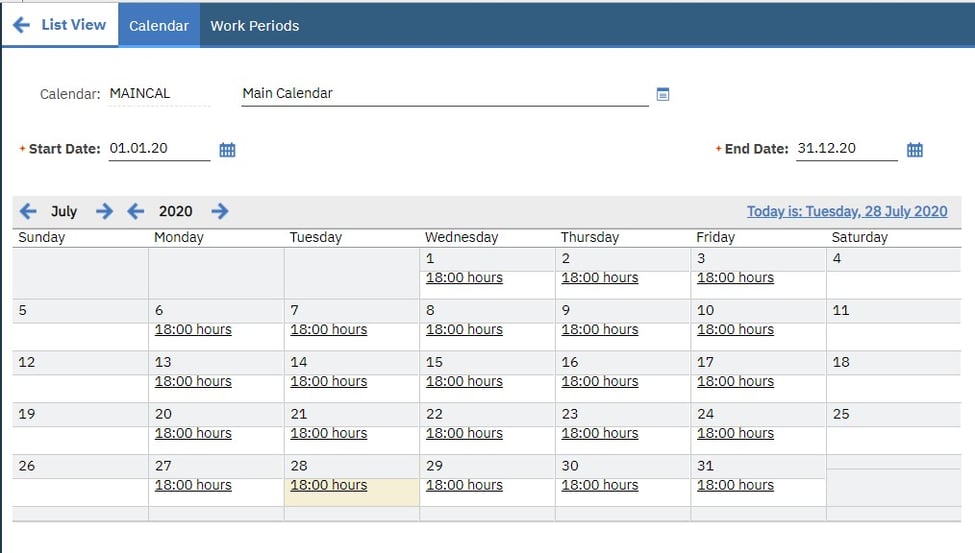
~ Define Calendar along with the appropriate Shift Patterns applied to the Calendar ~
The second prerequisite is to have well defined Labour resources, mapped with Crafts, Skill Levels and the Pay rates as required. Calendar and Shift must also be mapped to the Labour record that defines the availability of the labour resources on a working day along with the non-working times and breaks.
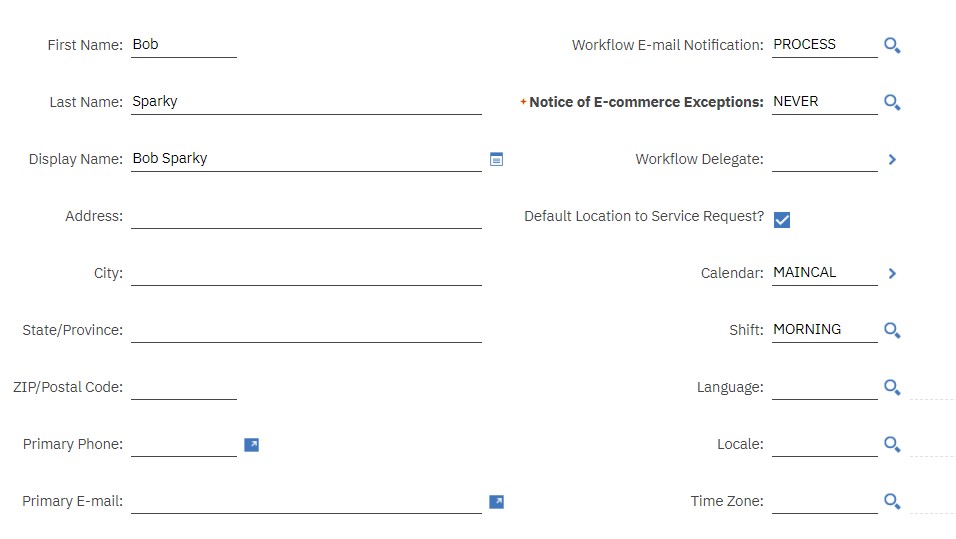
~ Secondly, have well defined Labour resources, mapped with Crafts, Skill Levels and the Pay rates as required ~
The next prerequisite is to create Crews with the required Crafts, qualifications and tools. The Crew must be mapped with the Calendar and Shift to specify the hours when the team would be available to do work. In order to create the Crews, the Crew Types must be created first, which are essentially templates that define the Crew requirements.
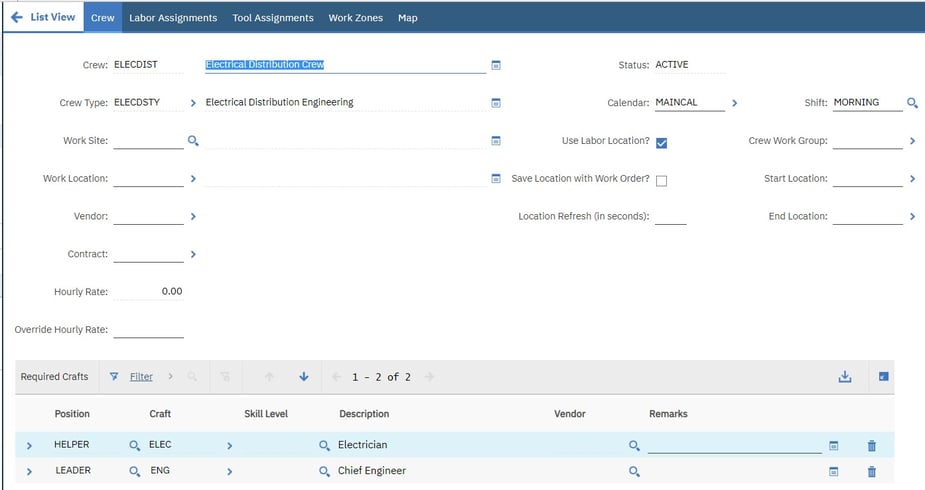
~ Then, create Crews with the required Crafts, qualifications and tools ~
When the Work Order plans are created, instead of adding separate lines for each Craft, a Crew can be added along with the hours required to do the work. This really helps when the structure and requirements for the Crews are well defined.
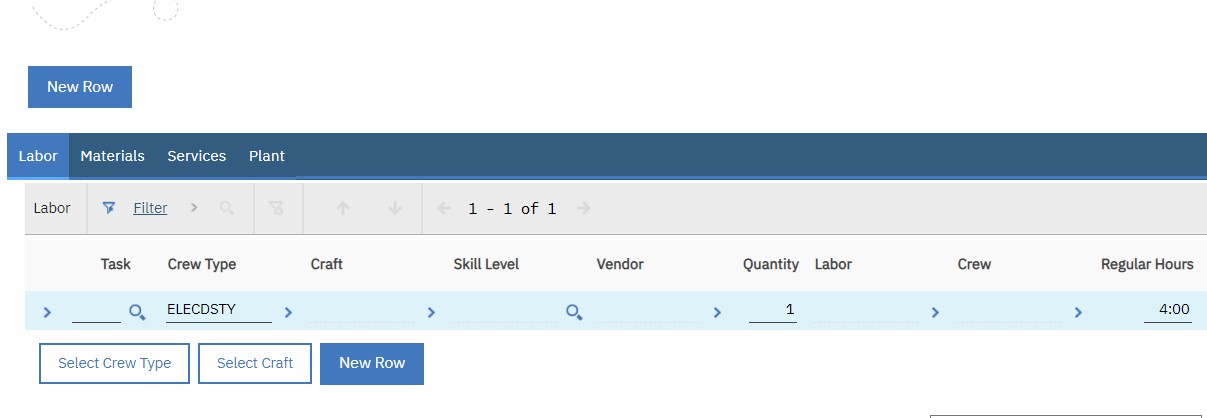
~ A Crew can be added along with the hours required to do the work ~
Once the Work Orders are planned and approved, the Schedulers schedule the jobs based on the constraints and relationships between the work orders and load resources based on labour availability, location of the work, skills required, etc.
In the example below, we have a simple schedule on the Maximo Graphical Scheduler application that shows 2 Work Orders along with the Crew Types required on each of those Work Orders.
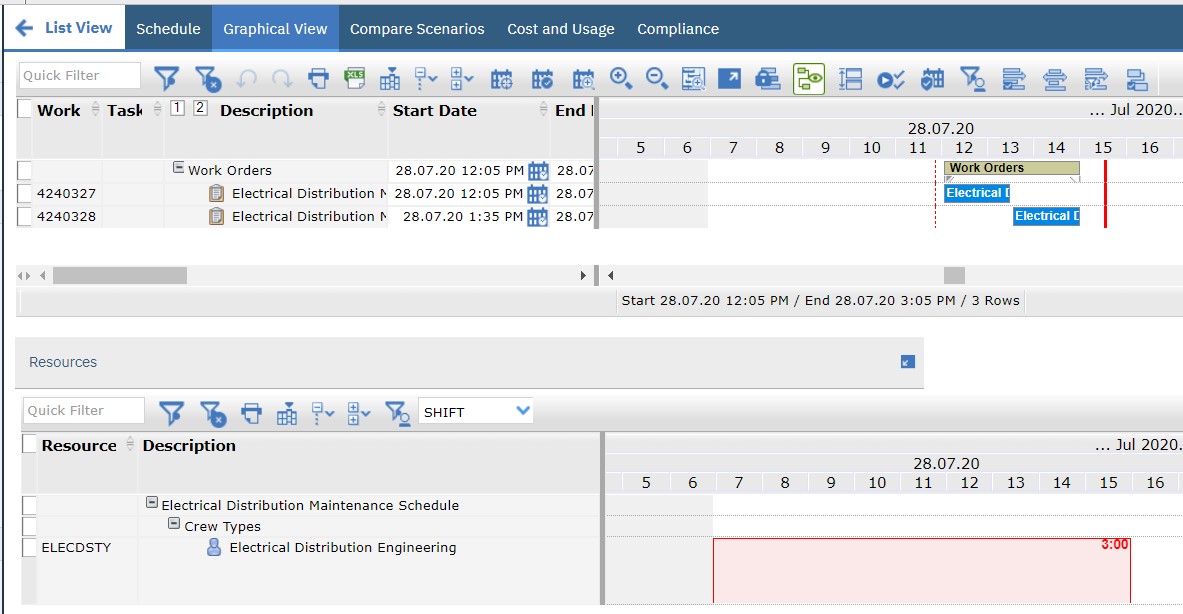
~ A simple schedule on the Maximo Graphical Scheduler application that shows 2 Work Orders along with the Crew Types required ~
Once the Work Orders are scheduled and the Schedule dates committed back to the Work Order records, the Crews can now be assigned to the Work Orders through the Graphical Assignments application.
In the picture below, you can see how the Crew called ELECDIST has been assigned to both the scheduled Work Orders. Once the Crew is assigned, the assignment bars turn GREEN as shown below.

~ The Crew called ELECDIST has been assigned to both the scheduled Work Orders ~
Also, if the Dispatch Team needs to optimize the travel route required by the Crew to reach the work locations, Street Level Routes can be generated and assessed in the Graphical Assignments application.
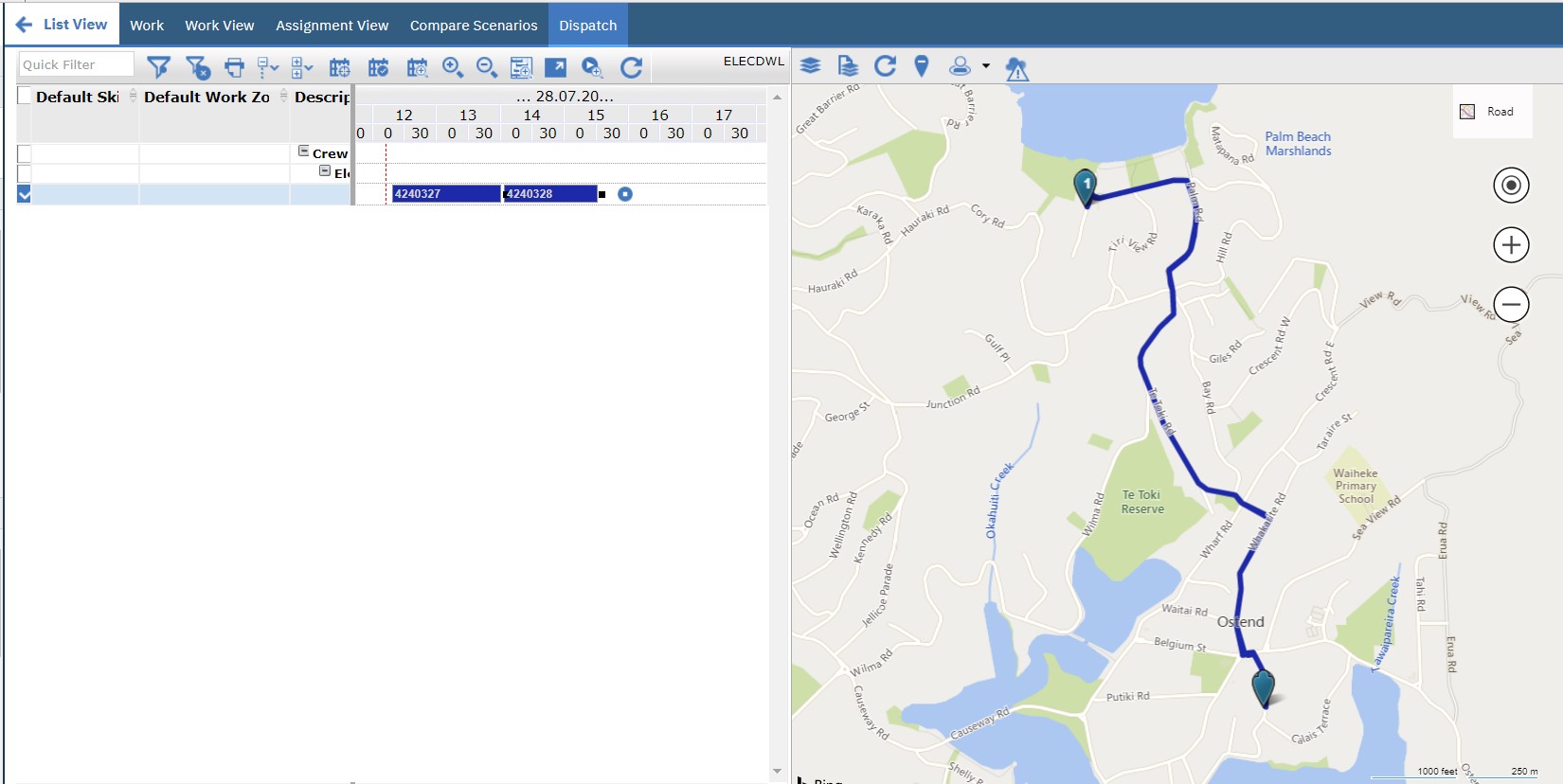
~ Street Level Routes can be generated and assessed in the Graphical Assignments application ~
When the assignments are done graphically, assignment lines also get recorded in the Work Order Tracking application, under the Assignments tab. Please note, the status of these assignments is still WAITASGN (Waiting to be Assigned) because the Labour resources have not been allocated to the Crew yet.

~ Assignment lines also get recorded in the Work Order Tracking application, under the Assignments tab ~
After the Work Order assignments are done, the Labour resources are assigned to the Crew using the Graphical Crew Management application. When the Labour records meet the Crew and Work requirements, they are shown in GREEN colour on the Crew View tab.

~ Labour records have met the Crew and Work requirements ~
Once the labour is assigned to the Crew on the Assignments tab, the Labour Assignment bars turn GREEN as well.
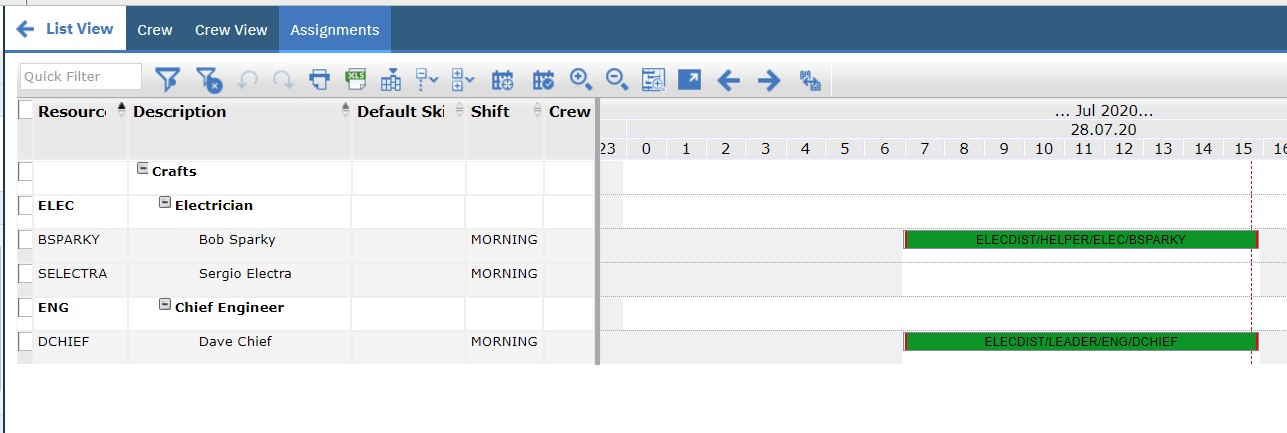
~ Labour has been assigned to the Crew on the Assignments tab ~
The labour assigned to the Crew can also be viewed in the Crews application,
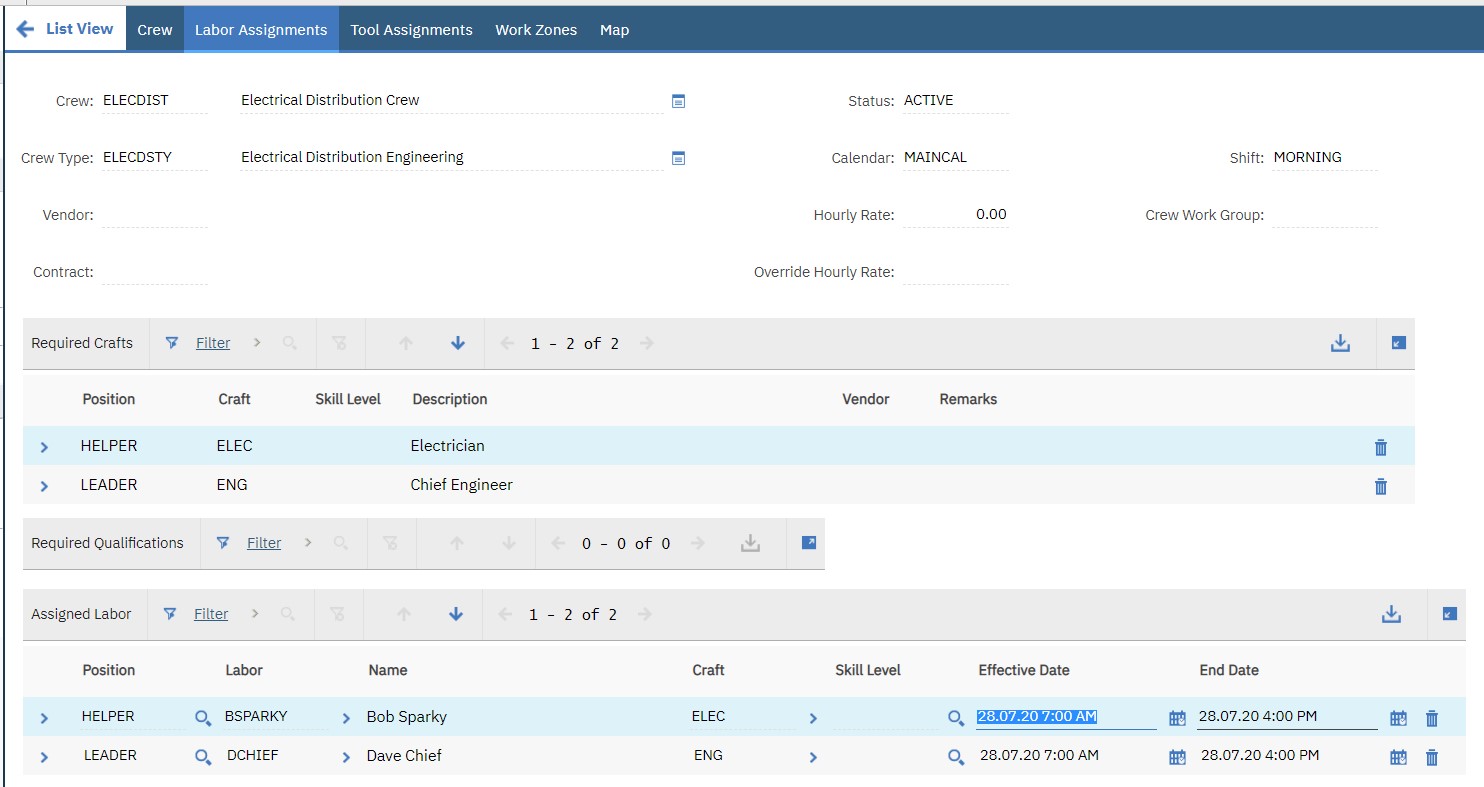
~ View the labour assigned to the Crew in the Crews application ~
In the below picture, one of the labour resources has called in sick and the Scheduler has modified the person availability. In this case, the labour record doesn’t match the Crew requirements because of their modified availability and hence shows up in YELLOW.

~ One of the labour resources has called in sick thus showing up in yellow ~
In order to fix this, a different labour record is assigned to the Crew and as the new labour resource is available and fulfills the Crew requirements, their assignment bar turns GREEN.

~ A different labour record is assigned to the Crew ~
The change labour in labour assignment can also be viewed in the Crews application,
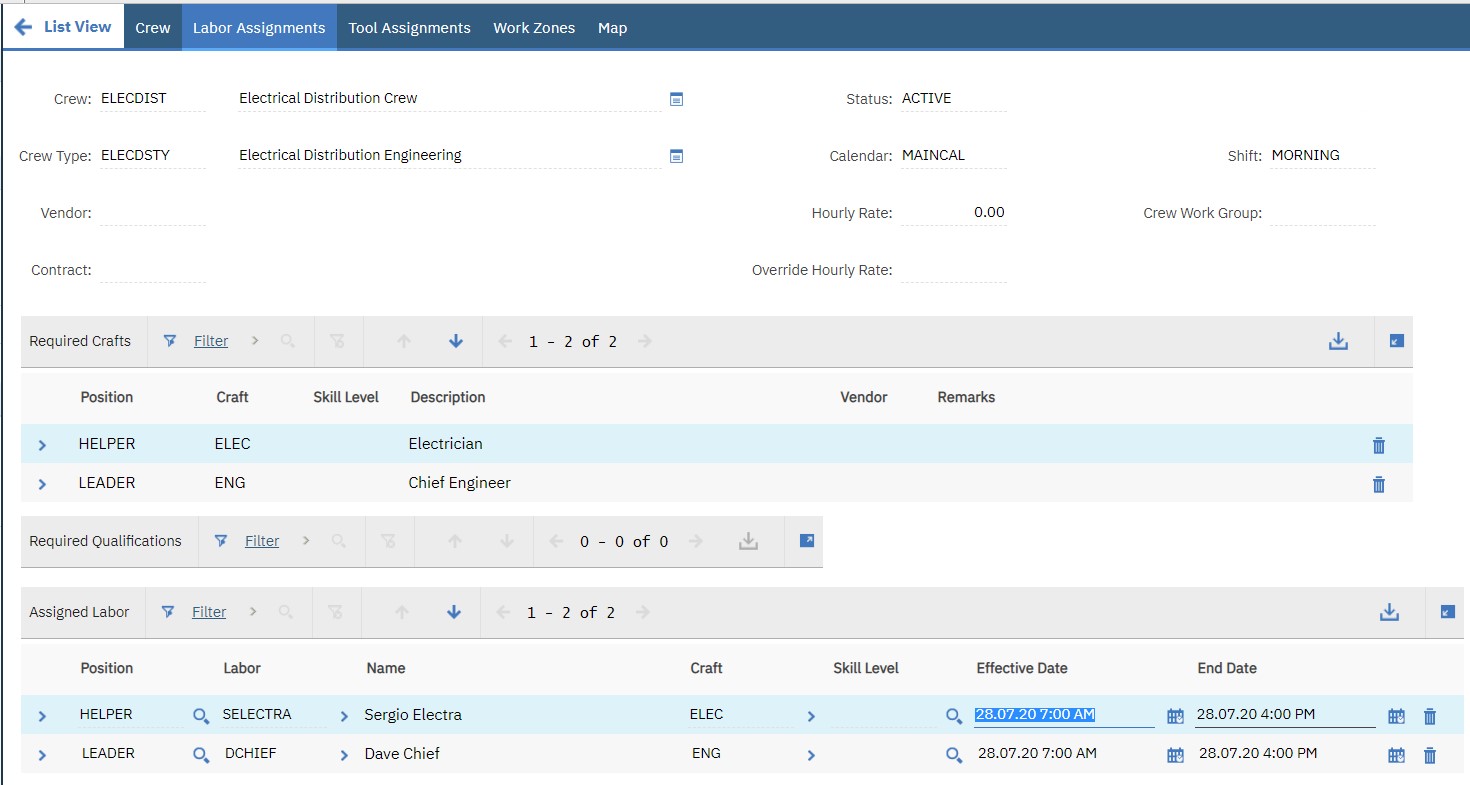
~ The change labour in labour assignment – viewed in the Crews application ~
This works great along with a mobile solution like Maximo Anywhere, if the Work Order queries on the mobile application are built to show the logged-in user’s work assignments. When a Dispatcher moves labour records in and out of the Crews through the Graphical Crew Management applications, it also updates the work list of the allocated labour resources, in online mode.
We would love to share all our knowledge on how to get the most out of Crew Management using IBM Maximo Scheduler, please contact BPD Zenith for any questions you may have.




